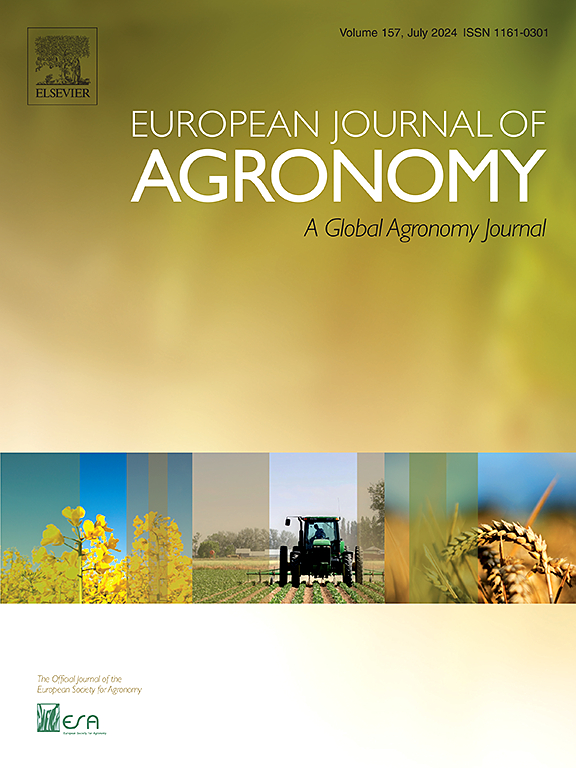Projecting the impacts of climate change on soybean production and water requirements using AquaCrop model
IF 4.5
1区 农林科学
Q1 AGRONOMY
引用次数: 0
Abstract
Soybean production under rainfed conditions is vulnerable to climate uncertainties, particularly in semi-arid and semi-humid regions. This study assessed the impacts of climate change (SSP1–2.6, SSP2–4.5, SSP5–8.5) on soybean production and water requirements in the near (2041–2060), mid (2061–2080) and far (2081–2100) future. Simulations were conducted in specific locations in Italy (Castelfranco and Cesa) and Slovenia (Ljubljana) under rainfed and irrigated conditions, considering different thresholds of readily available water (RAW) depletion (25–100 %) to start irrigation. The results showed predominantly negative impacts of climate change under rainfed conditions. Under SSP1–2.6 and SSP2–4.5, irrigation mitigated these negative effects, leading to improved soybean performance in Italy in the near and mid future. In contrast, the mitigating potential of irrigation in Ljubljana was reduced, affecting negatively the soybean performance even under irrigated conditions. Nevertheless, the yield potential of Ljubljana remains higher compared to Castelfranco and Cesa. Soybean water productivity (WPET) followed similar trend as yield, showing minimal change except under SSP5–8.5 in the mid and far future. Climate change reduced the soybean crop water requirement (CWR) which decreased progressively from SSP1–2.6 to SSP5–8.5 across all time periods. The net irrigation requirement (NIR) was highest under SSP5–8.5, increasing from near to far future but remained stable under SSP1–2.6 and SSP2–4.5. Increasing the RAW depletion threshold for irrigation reduced soybean NIR but significantly decreased yield. Therefore, the results suggest that irrigating soybean at 50 % RAW depletion could be a viable adaptation strategy to climate change, effectively balancing the trade-offs between NIR and yield.
求助全文
约1分钟内获得全文
求助全文
来源期刊

European Journal of Agronomy
农林科学-农艺学
CiteScore
8.30
自引率
7.70%
发文量
187
审稿时长
4.5 months
期刊介绍:
The European Journal of Agronomy, the official journal of the European Society for Agronomy, publishes original research papers reporting experimental and theoretical contributions to field-based agronomy and crop science. The journal will consider research at the field level for agricultural, horticultural and tree crops, that uses comprehensive and explanatory approaches. The EJA covers the following topics:
crop physiology
crop production and management including irrigation, fertilization and soil management
agroclimatology and modelling
plant-soil relationships
crop quality and post-harvest physiology
farming and cropping systems
agroecosystems and the environment
crop-weed interactions and management
organic farming
horticultural crops
papers from the European Society for Agronomy bi-annual meetings
In determining the suitability of submitted articles for publication, particular scrutiny is placed on the degree of novelty and significance of the research and the extent to which it adds to existing knowledge in agronomy.
 求助内容:
求助内容: 应助结果提醒方式:
应助结果提醒方式:


